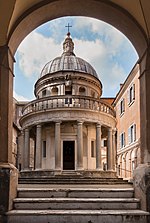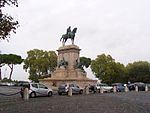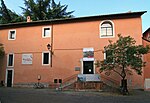John Cabot University
1972 establishments in ItalyEducational institutions established in 1972Universities and colleges in RomeUniversities in ItalyUse British English from November 2015 ... and 1 more
Use list-defined references from November 2015
John Cabot University (JCU) is a private American-style university in Rome, Italy. It was founded in 1972 and it offers undergraduate degrees, graduate degrees, and study abroad programs to English-speaking students. The university has more than 700 degree-seeking students and more than 1000 visiting students every year, representing over 80 nationalities. The average class size is fifteen students. The university consists of three campuses and two residence halls centrally located in Trastevere, Rome. The language of instruction is English.
Excerpt from the Wikipedia article John Cabot University (License: CC BY-SA 3.0, Authors).John Cabot University
Rampa di Monte Aureo, Rome Municipio Roma I
Geographical coordinates (GPS) Address Nearby Places Show on map
Geographical coordinates (GPS)
| Latitude | Longitude |
|---|---|
| N 41.887777777778 ° | E 12.467222222222 ° |
Address
Trastevere Moto
Rampa di Monte Aureo
00120 Rome, Municipio Roma I
Lazio, Italy
Open on Google Maps










